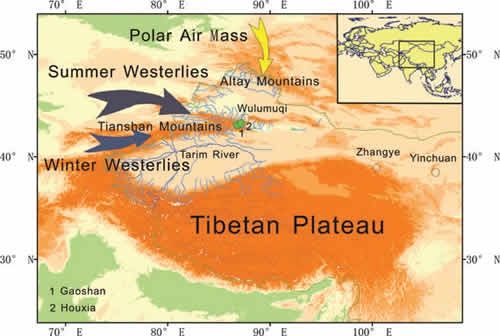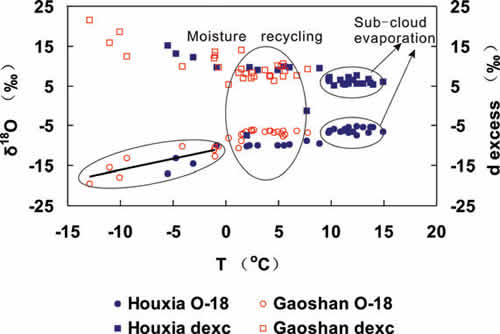Professor PANG Zhonghe and his team research the isotopic composition of precipitation in northwest China.
They have analysed samples taken from individual precipitation events at two neighboring high-altitude stations in the Tianshan Mountains (Houxia, 2100 ma.s.l. and Gaoshan, 3545 m a.s.l.) in northwest China. They also have taken into account relevant data available for stations in northwest China through the IAEA-WMO Global Network for Isotopes in Precipitation (GNIP) (IAEA, 2006)
They find the following facts. (1)A linear regression of the d excess versus temperature yields nearly the same slope for all three stations. This suggests that the decrease of the d excess with surface temperature is mainly controlled by subcloud evaporation. (2)Further evidence for recycling of moisture evaporated from the ground over the region in northwest China has been given by the comparatively high tritium concentration of precipitation at the GNIP station Wulumuqi. (3)It shows that the d excess at Wulumuqi is higher than at Houxia and Gaoshan stations. This ‘inverse altitude effect’ suggests that in the vast arid area of northwest China moisture recycling is an important component of precipitation and that the recycled fraction in the air moisture decreases with altitude.
Pang et al., Processes affecting isotopes in precipitation of an arid region, Tellus, 2011, 63B, 352-359(Download Here)

Fig.1 The location map of precipitation monitoring sitse

Fig. 2.Plot of temperature versus δ18O and d excess for samples collected simultaneously at the two stations Houxia and Gaoshan.